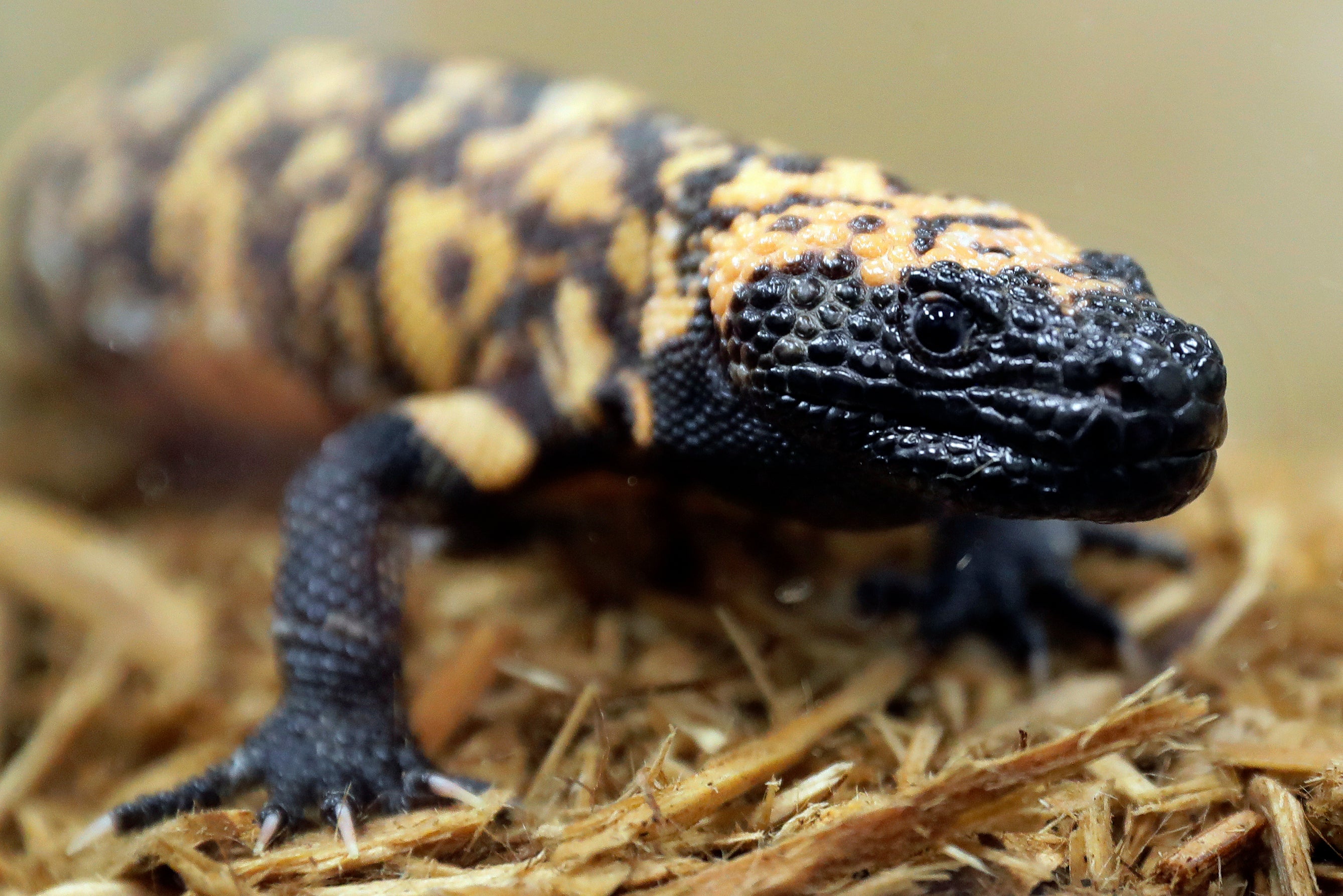A Colorado man died after a Gila monster bite. What experts say about keeping pet lizards
Gila monsters are a type of lizard widely regarded for their striking color patterns and typically easygoing personality but they have a painful and venomous bite

A Colorado man who died after getting bitten by a Gila monster was hardly alone in having the gnarly looking lizard for a pet.
They're legal to own in most states, easily found through breeders and at reptile shows, and widely regarded for their striking color patterns and typically easygoing personality.
But while 34-year-old Christopher Ward's death Friday may have been the first from a Gila monster in the US in almost a century, the creature's bite is well-known to be excruciating — and venomous. For that reason, some question the wisdom of keeping the species as pets.
“It’s like getting your hand slammed, caught in a car door," Arizona State University professor Dale DeNardo said of the lizard's bite. "Even that initial pain is extended for an hour. Then you get the typical days of soreness, throbbing pain. It’s much worse than any bee, wasp or scorpion.”
A Gila monster enthusiast who has studied the reptiles for decades, DeNardo said even he wouldn't want to have one in his house.
Within minutes of Ward’s pet lizard named Winston biting down on his hand without letting go, Ward was vomiting and couldn't breathe, according to a report by the animal control officer who interviewed his girlfriend.
He was put on life support but didn't pull through, dying less than four days after the bite.
Ward's girlfriend told animal control they bought Winston at a reptile exhibition in Denver in October and another Gila monster named Potato from a breeder in Arizona in November. She relinquished the lizards to be taken to a South Dakota reptile sanctuary after the bite.
Colorado requires a permit to keep a Gila (pronounced HE-la) monster. Only zoological-type facilities are issued such permits, however, and Ward apparently didn't have one for his lizards, said Colorado Parks and Wildlife spokesperson Kara Van Hoose.
By being sold at a reptile show, Winston may have slipped through the cracks of state enforcement. Colorado Department of Natural Resources agents sometimes attend shows to make sure illegal animals aren't for sale.
“It does happen from time to time,” Van Hoose said. “We've confiscated some from those.”
Online, breeders sell Gila monsters for $1,200 and up after hatchlings emerge in the fall. While it's possible that some people catch wild Gila monsters to keep as pets, DeNardo said roads and habitat loss to home construction are the reptiles' biggest threats.
The lizards' natural habitat ranges from northern Mexico across Arizona and into parts of California, Nevada, New Mexico and Utah. While declining population is sometimes considered a concern — perhaps down to several thousand in the wild — Gila monsters are not protected as a threatened or endangered species.
States such as Maine and Kentucky prohibit keeping Gila monsters as pets, while others such as Montana don't even require permits for them. Many states fall in between, requiring a permit to have the animals.
One such permit-holder is Colorado Gators, a reptile sanctuary and tourist attraction not far from Great Sand Dunes National Park and Preserve in rural southern Colorado. The facility with a source of naturally warm groundwater takes in alligators and other rescued, confiscated and abandoned reptiles, including a Gila monster after the death of a pet store owner.
Owner Jay Young counts himself among Gila monster fans.
“Only certain people, of course, should have them and in places where they can legally have them,” Young said. “But they’re just adorable. Just look at that little face. One of the cutest lizards, for sure.”
They can live at least 20 years on a diet of small rodents and quail eggs, living in a smallish aquarium of 15-20 gallons (57-76 liters), Young said.
In the wild, Gila monsters spend as much as 95% of the time underground to conserve water in hot, dry weather, coming out more frequently in wet weather, DeNardo said.
For their size, up to 22 inches (56 centimeters), Gila monsters travel widely, ranging over an area as big as 100 or more U.S. football fields in pursuit of prey including bird eggs in nests high up in cactuses. To get there, they conserve energy, maintaining a slow but steady pace for a lizard.
Because they're slow, they rely on their painful venom for defense, often giving a warning hiss before their strike.
“It’s never accidental," DeNardo said. “You’ve got to be messing with them.”
Before Ward, the last person to die of a Gila monster bite, around 1930, may have had cirrhosis of the liver, DeNardo said. A yet-to-be released autopsy report may show if the venom from Ward's lizard killed him outright or whether an underlying condition, such as an allergy, was a factor.
“I highly suspect that this one is going to be similar," DeNardo said, “that this person had some underlying cause that made him more susceptible.”
Bookmark popover
Removed from bookmarks